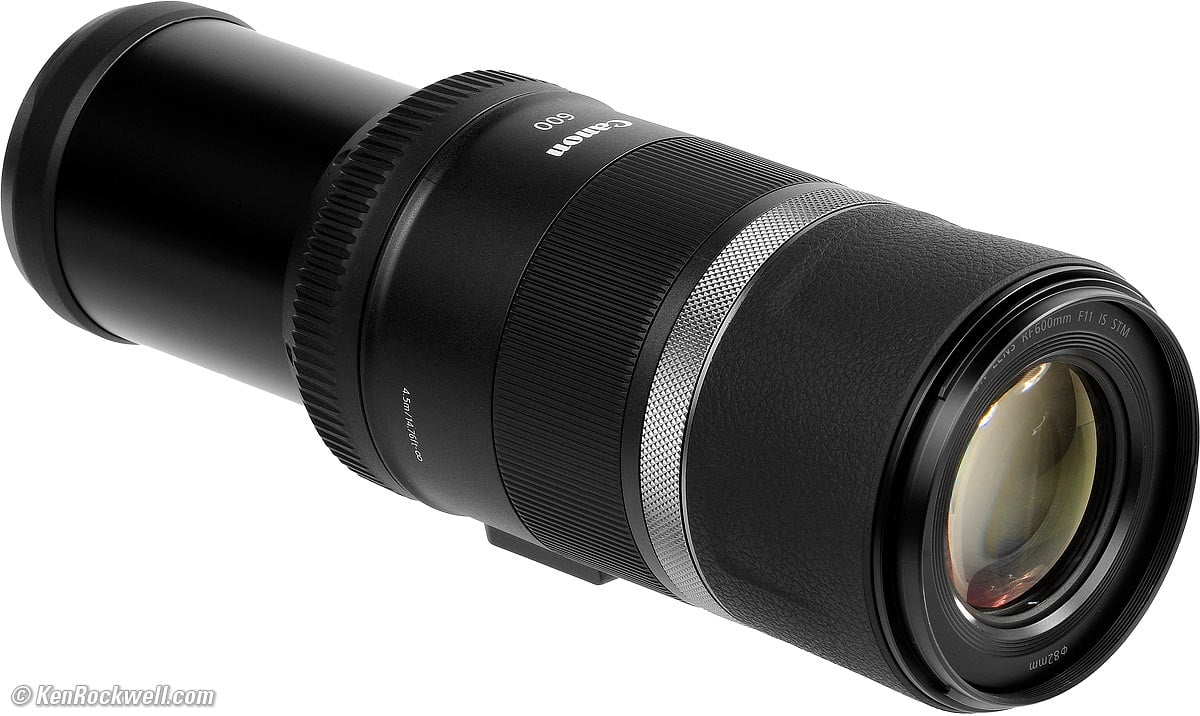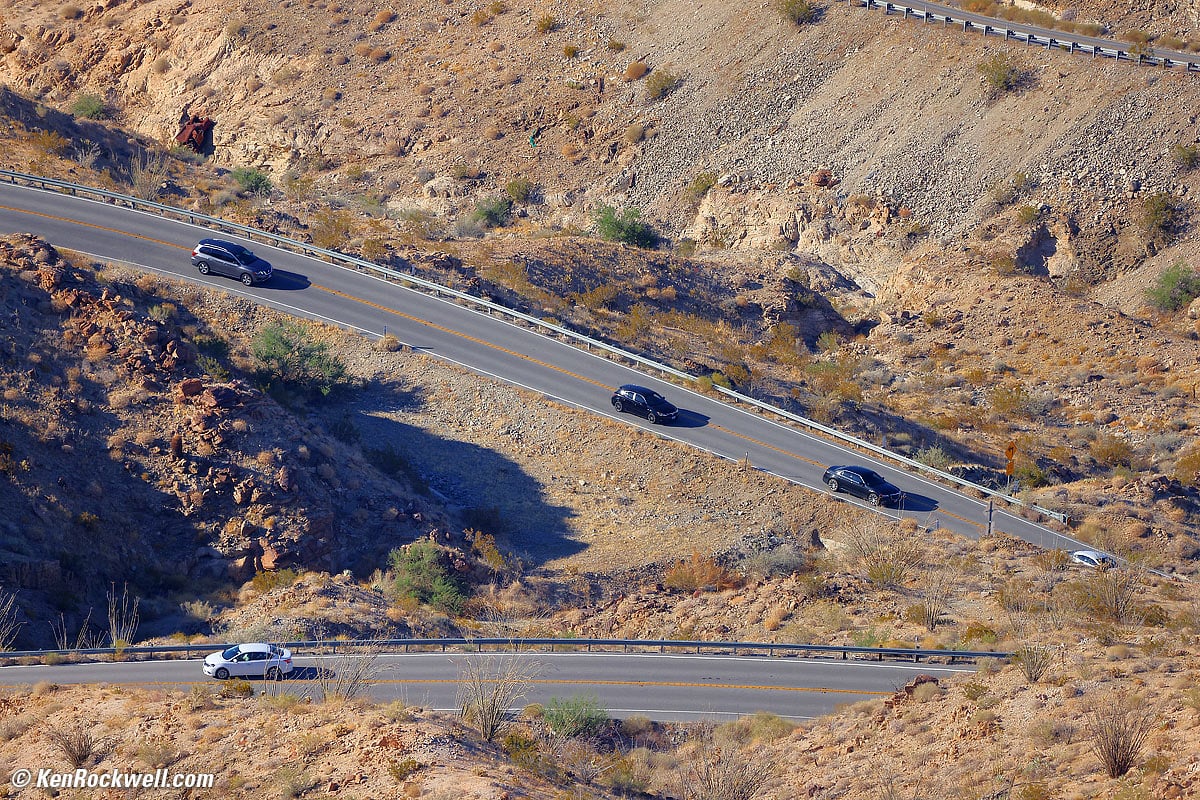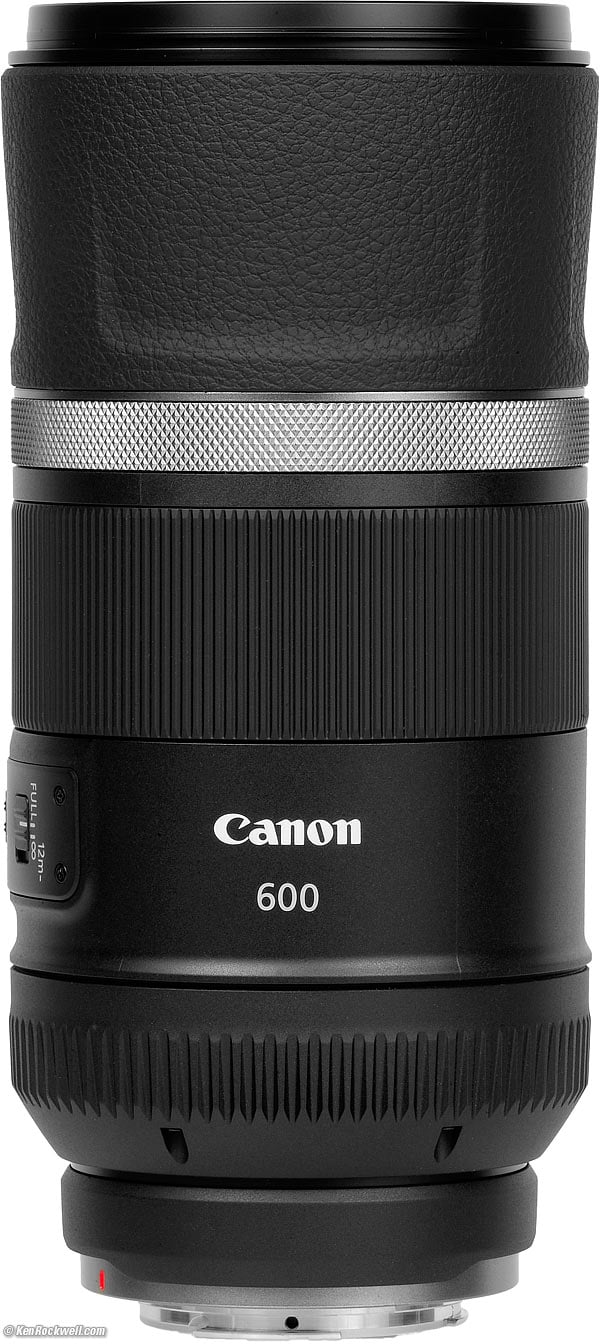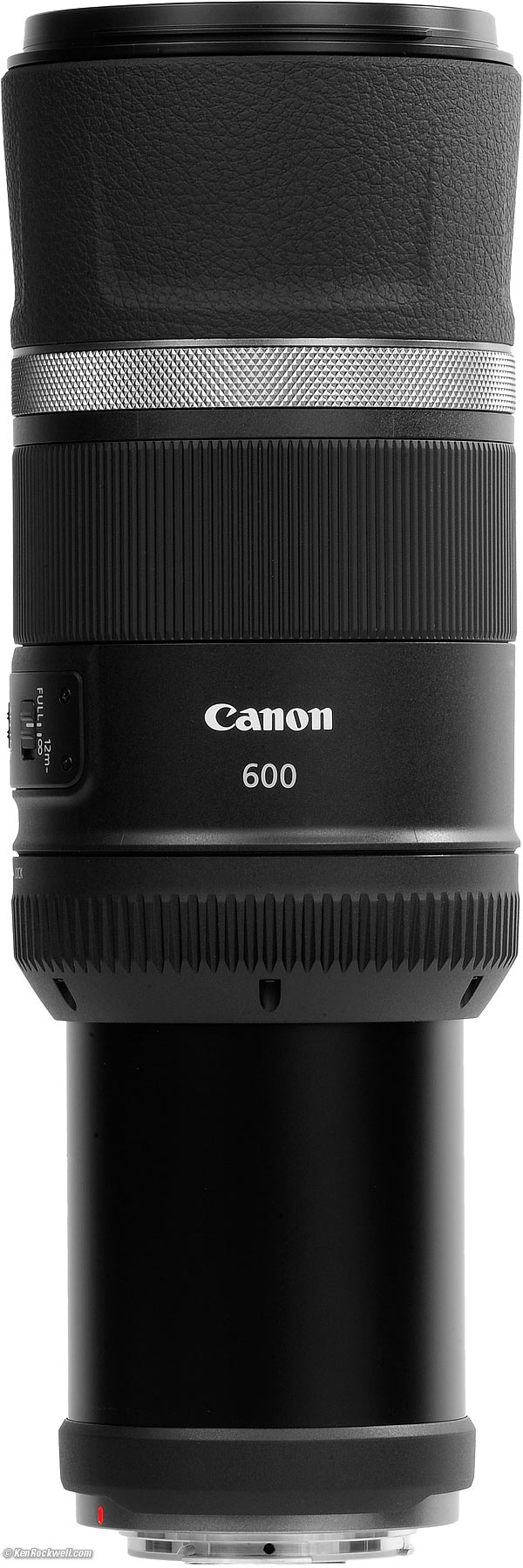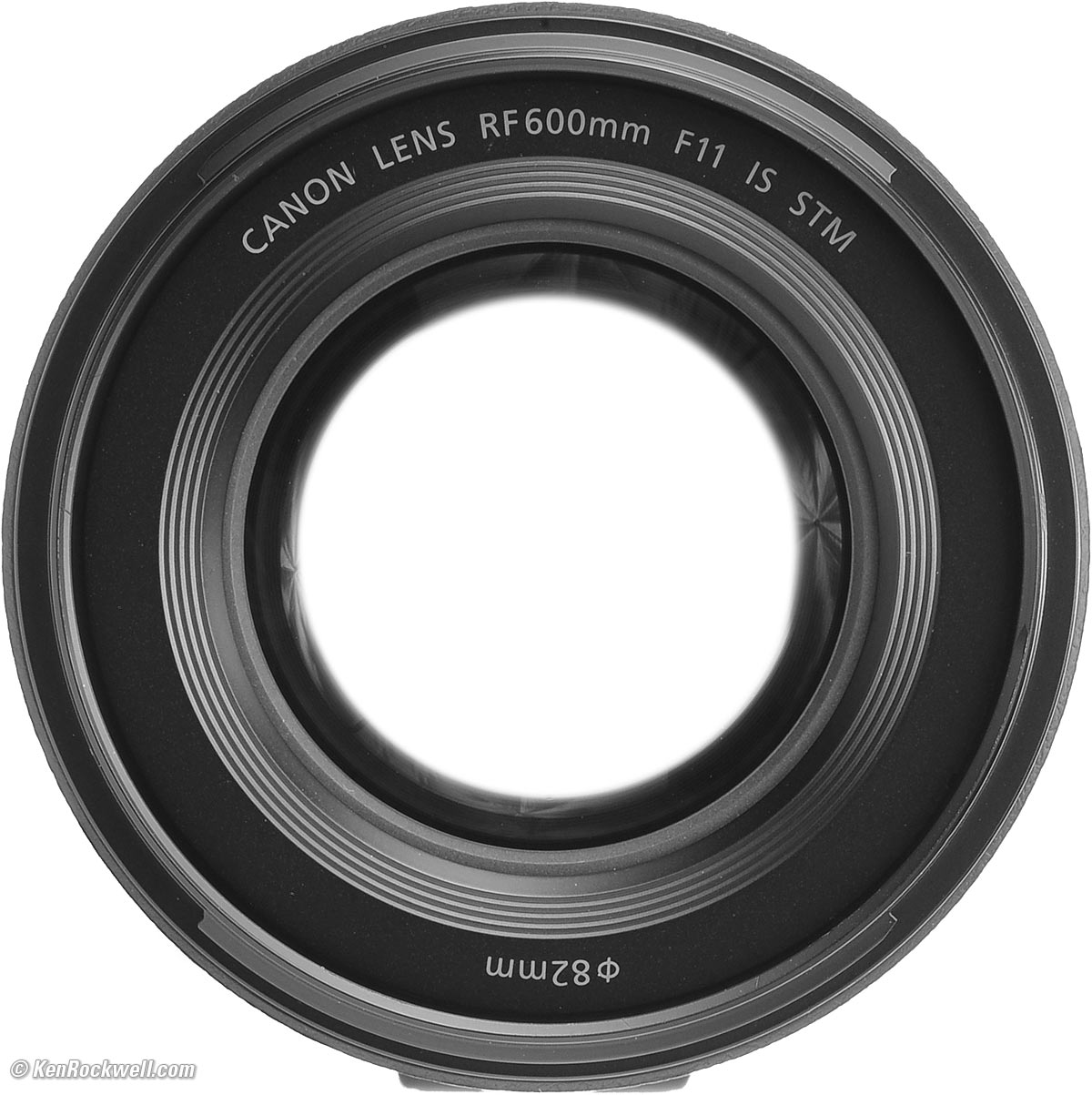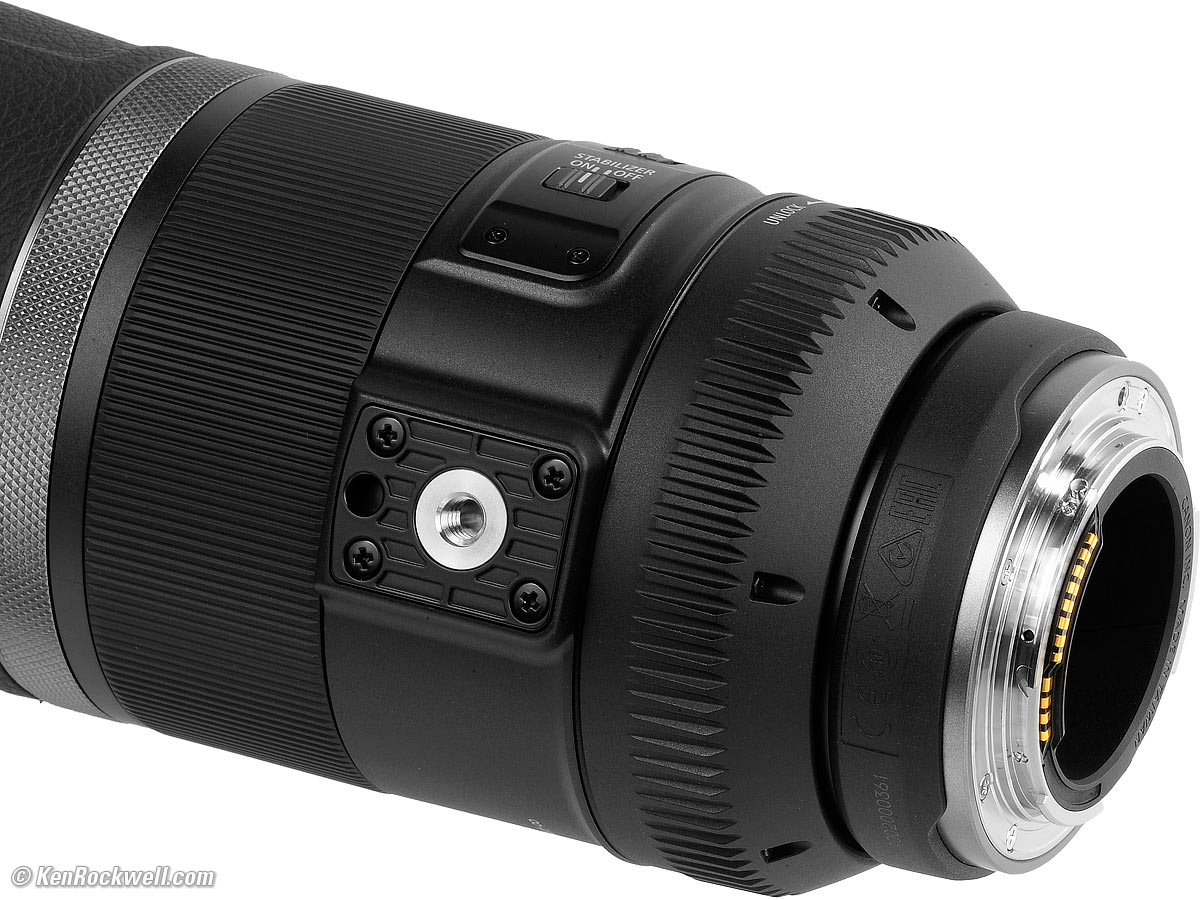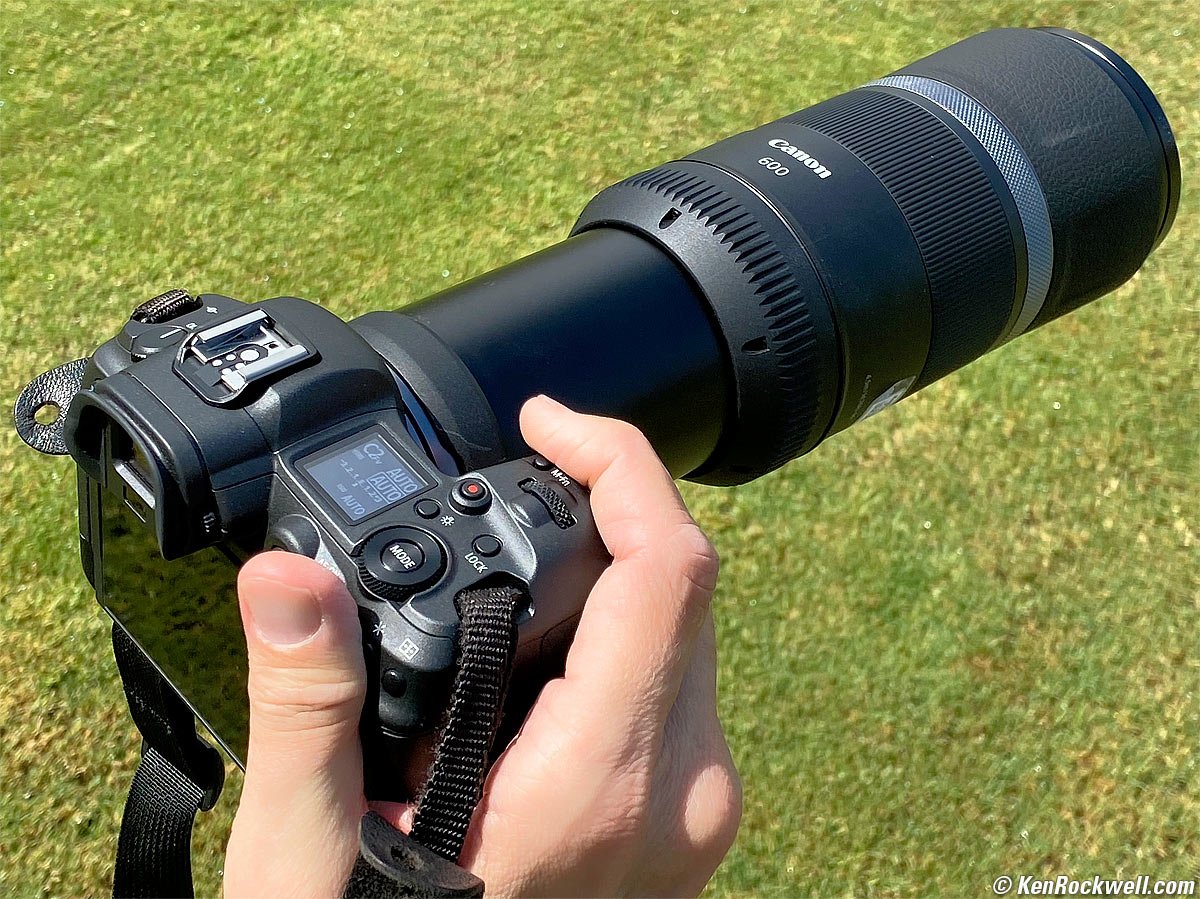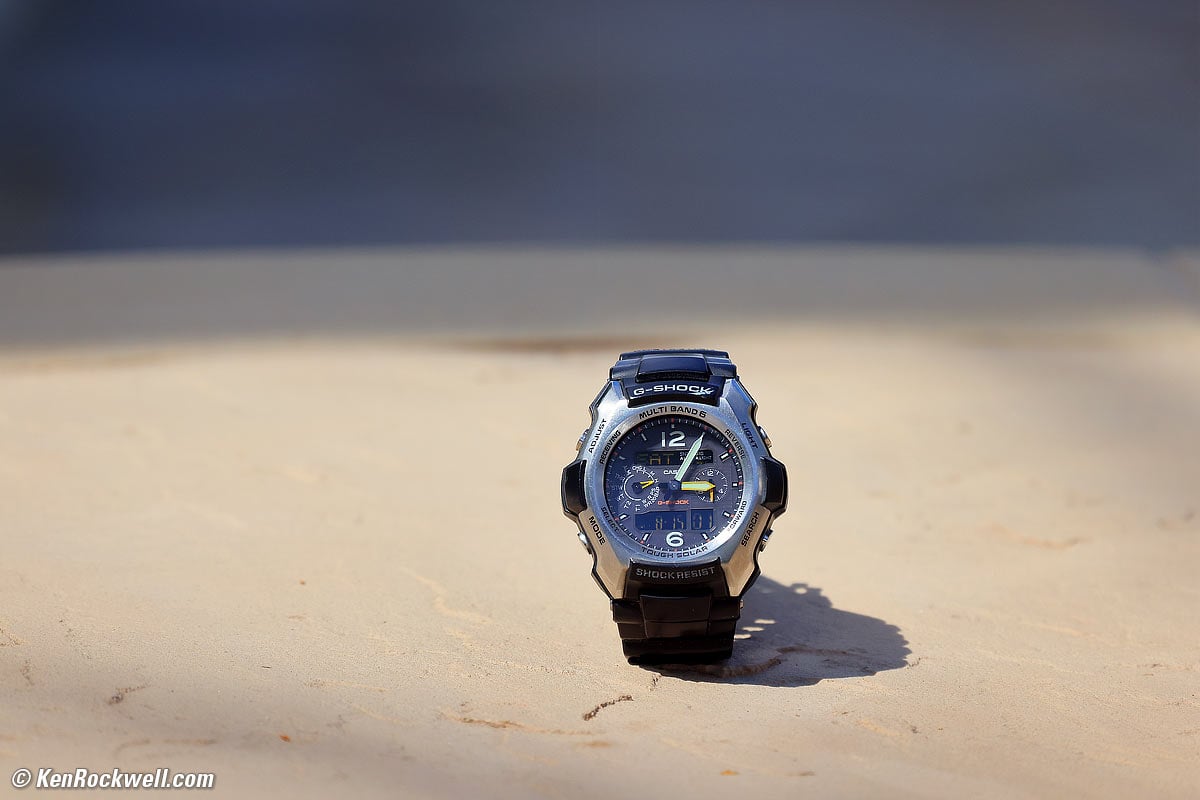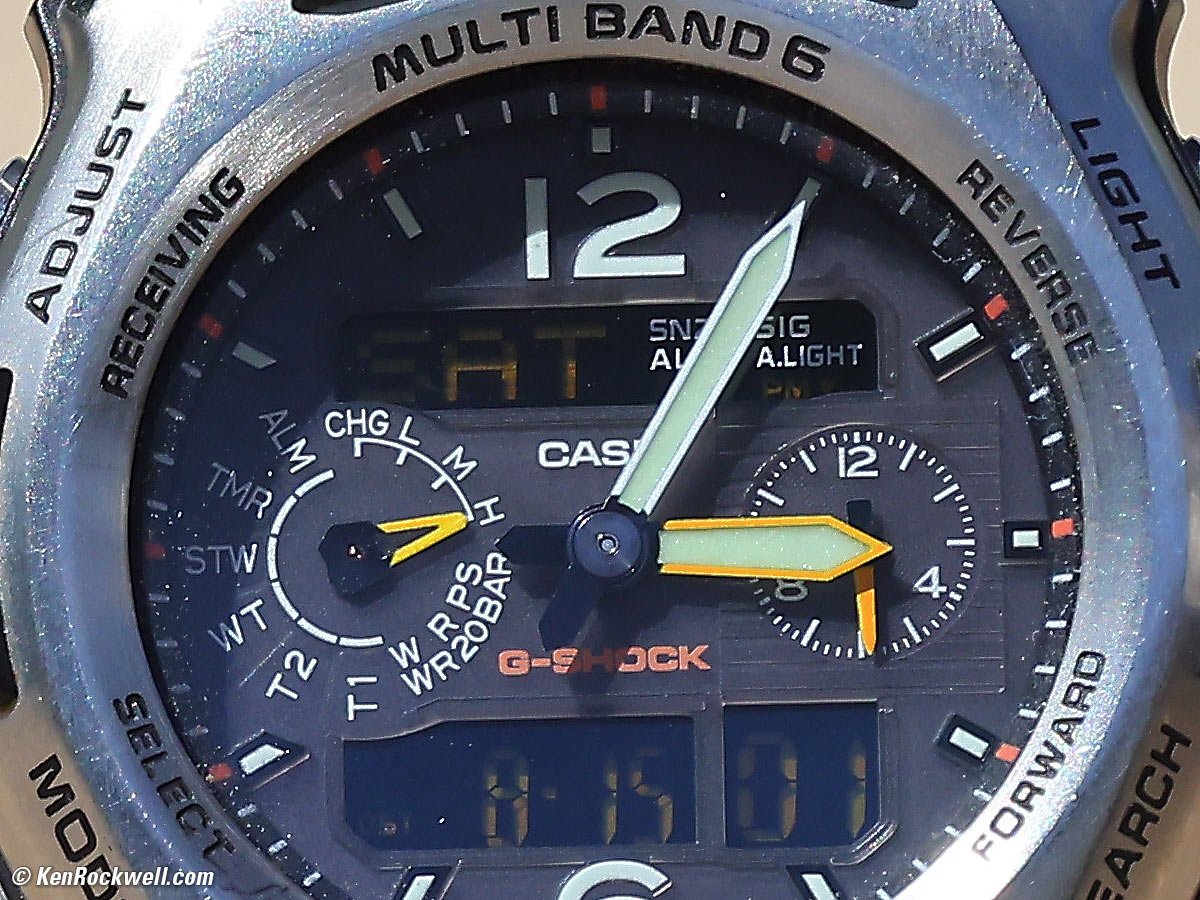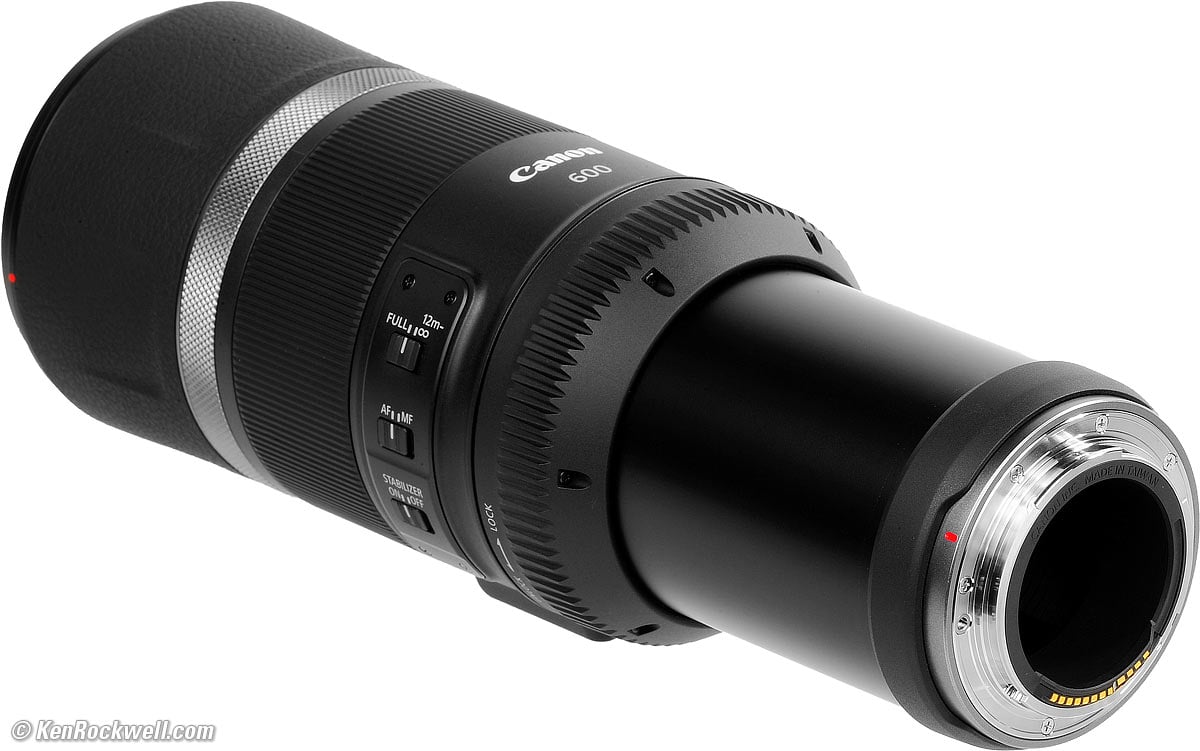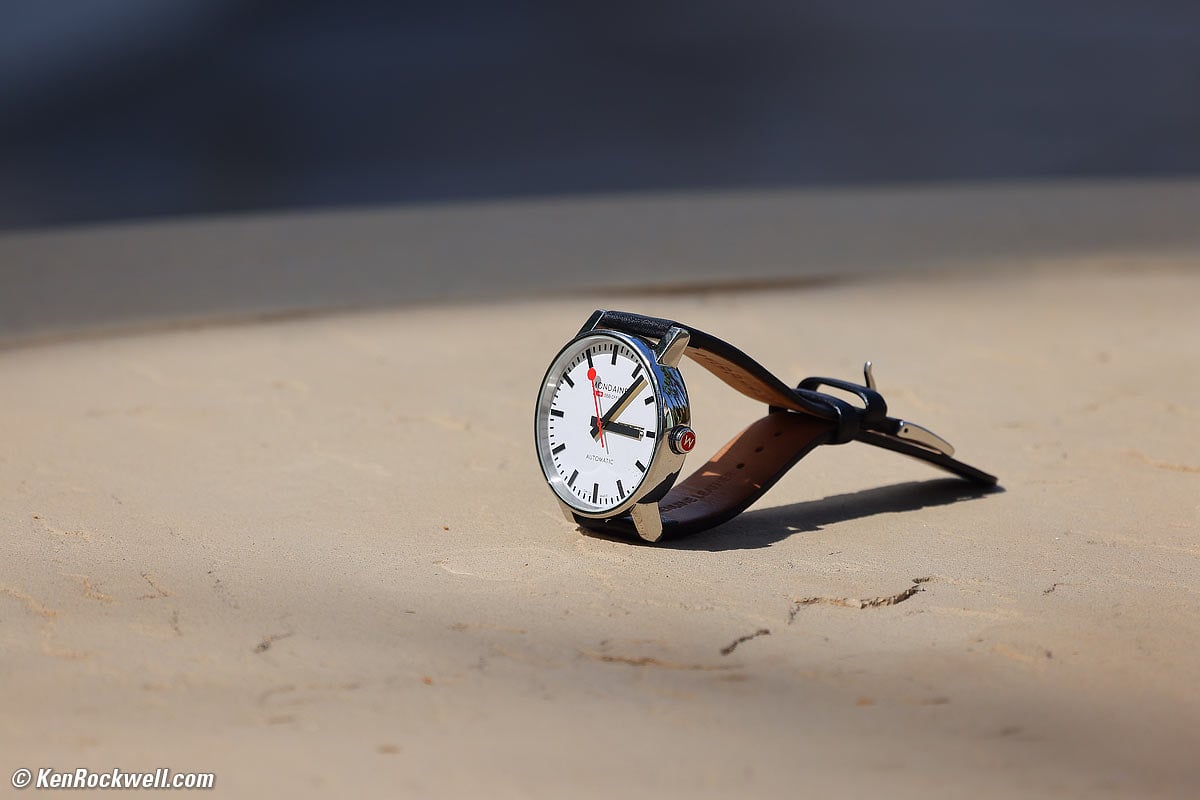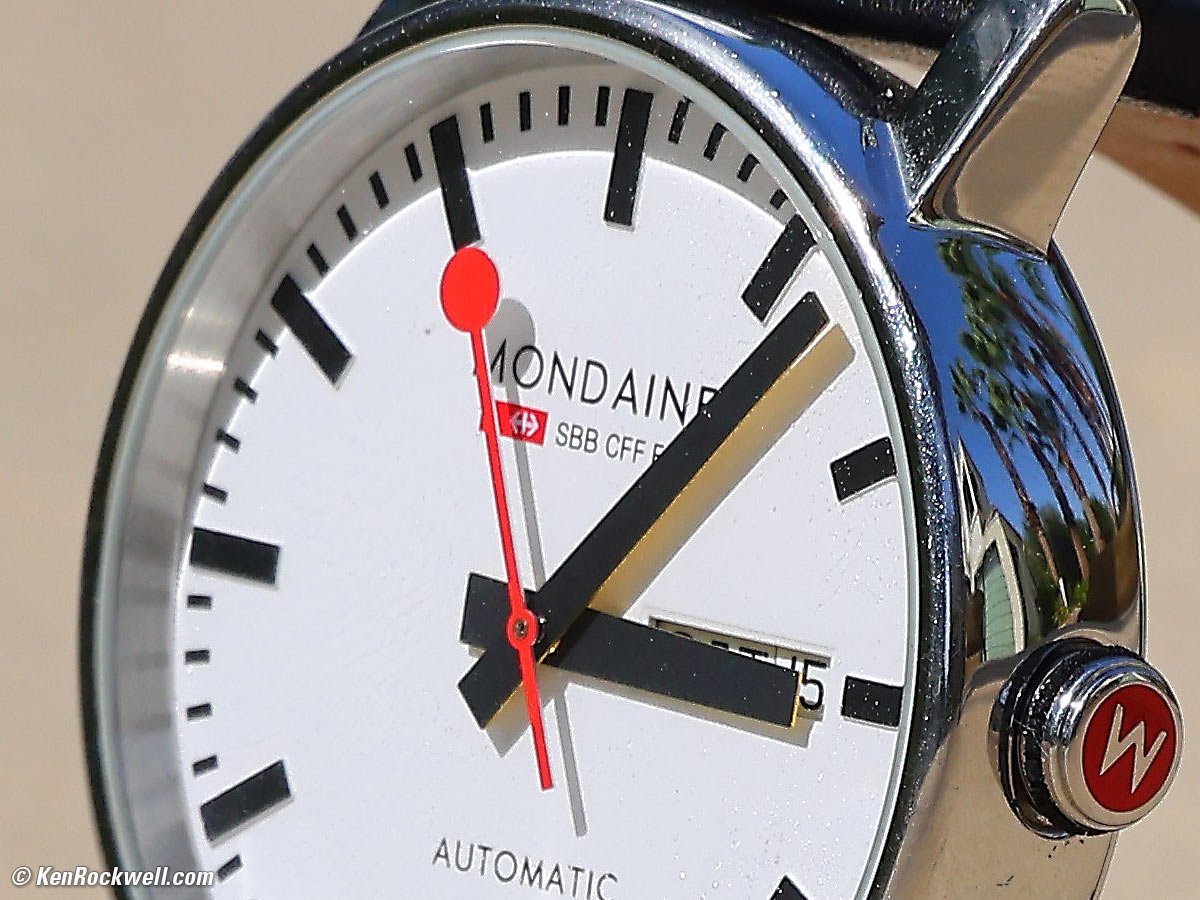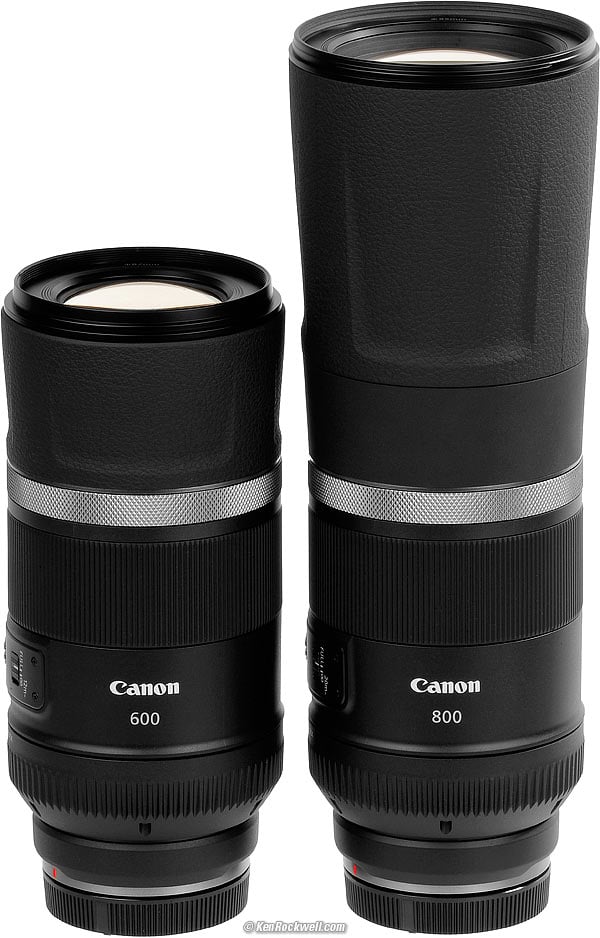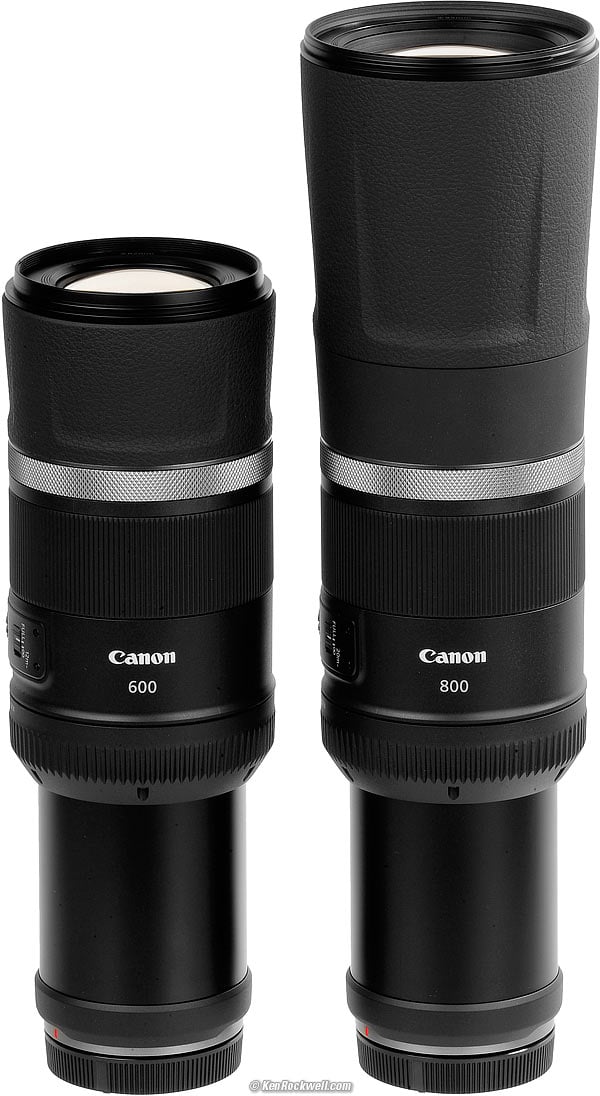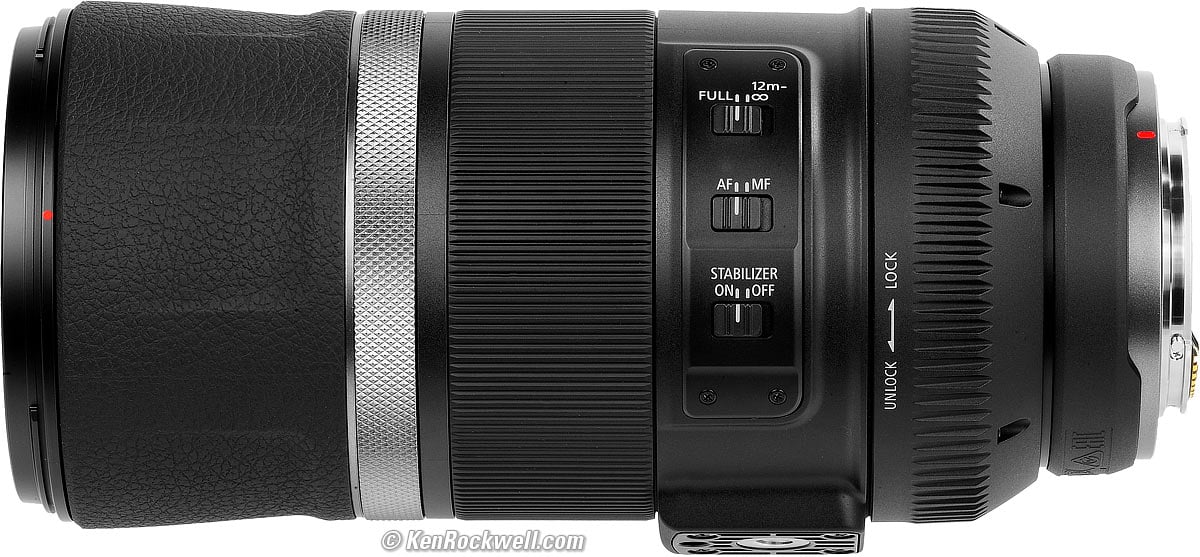Canon RF 600mm
f/11 IS STM DO
Sample Images Intro Compatibility
Specifications Performance Compared
R3 R5 R5C R6 II R6 R R8 RP R7 R10 R50 R100
Bodies Compared RF Lenses EF Lenses Flash
Canon RF 600mm f/11 IS STM DO (82mm filters, 32.8 oz./929g, 15'/4.5m close focus, $699). bigger. I got mine at B&H. I'd also get mine at Adorama, at Amazon or at Crutchfield, or used at eBay if you know How to Win at eBay.
This all-content, junk-free website's biggest source of support is when you use those or any of these links to approved sources when you get anything, regardless of the country in which you live. Thanks for helping me help you! Ken.
December 2022 Better Pictures Canon Reviews Mirrorless RF Lenses EF Lenses Flash All Reviews
Sample Images top
Sample Images Intro Compatibility
Specifications Performance Compared
These are just snapshots; my real work is in my Gallery.
These are shot hand-held as NORMAL JPGs; no tripods, FINE JPGs or RAW CR3 files were used or needed.
Cars & Crashed Car from a half-mile (800 meters) away, 5:44 PM, 07 August 2020. Canon EOS R5, Canon RF 600mm IS STM, f/11 hand-held at 1/640 at Auto ISO 500 (LV 14.0), Perfectly Clear. bigger or camera-original © JPG file.
Yes, it's ultra-sharp, even hand-held.
Palms from a quarter-mile (400 meters) away, 6:43 PM, 07 August 2020. Canon EOS R5, Canon RF 600mm IS STM at f/11 hand-held at 1/800 at Auto ISO 1,250 (LV 13.0), Perfectly Clear. bigger or camera-original © JPG file.
It also works great with teleconverters:
Palms from a quarter-mile (400 meters) away, 6:44 PM, 07 August 2020. Canon EOS R5, Canon RF 600mm IS STM with Canon RF 2× extender (makes it a 1,200mm lens), f/22 hand-held at 1/1,250 at Auto ISO 6,400, -0.7 stops exposure compensation, (LV 13.4), Perfectly Clear. bigger or camera-original © JPG file.
Thunderstorm Cloud, 3:07 PM, 15 August 2020. Canon EOS R5, Canon RF 600mm IS STM at f/11 hand-held at 1/800 at Auto ISO 100 (LV 16.6), Perfectly Clear. bigger or camera-original © JPG file.
Introduction top
Sample Images Intro Compatibility
Specifications Performance Compared
|
I buy only from these approved sources. I can't vouch for ads below. |
This ultralight and collapsible 600mm lens is so new and innovative that most people don't understand it yet. Mirrorless cameras, unlike DSLRs, view and autofocus great with slow lenses, so by taking advantage of this Canon created this gem which allows us to carry and shoot, hand-held, a lens with 12× magnification. I have no problem hand-holding it with the Canon RF 2× extender, making it a hand-holdable 1,200mm f/22 lens with 24× magnification!
It works great on Canon's full-frame mirrorless cameras, whose autofocus and viewing systems work perfectly with slow lenses like this— something DSLRs could never do.
This lens is small, light and inexpensive compared to the seven-pound, $13,000 EF 600mm f/4L IS USM III because it's three stops less sensitive to light. The $13,000 lens isn't much different otherwise; even close-focus is about the same.
This lens uses Canon's DO "diffractive optics" technology, which is a fancy name for a sandwiched Fresnel system. This clever technology descends from lighthouse lenses of 200 years ago, where it was discovered that one could segment a large lens element and remove a lot of the weight so long as you kept the curved parts intact.
Just rotate the rear lock and the rear section in moves in and out to make it easier to stow:
When I feel the lightweight plastic sections sliding in and out, it reminds me of my 1969 Mattel Super-Eyes optical set I had as a kid. It's also load of plastic optical tubes that slide in and out for experimentation. Laugh all you want, but as a kid my Super-Eyes taught me a load about optics which I still use today, and this lens is so light that I can actually take it with me so I have it when I need it for a significant professional advantage over guys who have nothing more than a 100-400mm lens. Of course I also carry the RF 2× extender, so I'm good out to 1,200mm.
All the optics are in the front section. The collapsing rear section only contains air.
Why do I need lenses this long? It's for wildlife, and personally I use it to make sunsets explode. When you have a blah sunset the disk of the sun and the area close to it are still usually very vivid. Point this at that, or at the reflection of that sunrise or sunset in the wet sand at the beach or reflected in a building from far away, and you've got a wild sunset that other guys can't get. It's ultra sharp, so it's way better than rubbish from Sigma or trying to use stacked EF teleconverters.
Be careful, it's for long distances. It only focuses as close as 15 feet or 4.5 meters.
I got my RF 600mm at B&H. I'd also get mine at Adorama, at Amazon or at Crutchfield, or used at eBay if you know How to Win at eBay.
New intro top
 Brilliant new ultralight and inexpensive ultratele; created expressly for mirrorless to do what has never been possible on DSLRs.
Brilliant new ultralight and inexpensive ultratele; created expressly for mirrorless to do what has never been possible on DSLRs.
 Collapsible telephoto.
Collapsible telephoto.
Good intro top
 Super sharp in a tiny and inexpensive package.
Super sharp in a tiny and inexpensive package.
 Image Stabilization rated 5 stops.
Image Stabilization rated 5 stops.
 I get perfect sharpness hand-held most of the time at 1/60!
I get perfect sharpness hand-held most of the time at 1/60!
 Easily hand-holdable, even with the RF 2× extender.
Easily hand-holdable, even with the RF 2× extender.
 Separate focus and control rings.
Separate focus and control rings.
 Tripod socket.
Tripod socket.
 Collapses for stowage.
Collapses for stowage.
 Works great with teleconverters.
Works great with teleconverters.
 Ultra light.
Ultra light.
 Small.
Small.
 100% U.S.A.-based high-quality technical support at (800) OK-CANON.
100% U.S.A.-based high-quality technical support at (800) OK-CANON.
Bad intro top
 Doesn't focus as fast as shorter lenses, which is to be expected.
Doesn't focus as fast as shorter lenses, which is to be expected.
 Having an f/11 maximum aperture means only about the central 20 × 20mm section of your image will have autofocus. Good news is this same area also works even with the Canon RF 2× extender.
Having an f/11 maximum aperture means only about the central 20 × 20mm section of your image will have autofocus. Good news is this same area also works even with the Canon RF 2× extender.
Missing intro top
 No diaphragm; always shoots at f/11.
No diaphragm; always shoots at f/11.
 ET-88B hood not included (not needed, either).
ET-88B hood not included (not needed, either).
 No case included.
No case included.
Compatibility top
Sample Images Intro Compatibility
Specifications Performance Compared
I got my RF 600mm at B&H. I'd also get mine at Adorama, at Amazon or at Crutchfield, or used at eBay if you know How to Win at eBay.
This lens only works on Canon's EOS-R series of mirrorless cameras.
It works with either of the RF 2× Extender or RF 1.4× Extender teleconverters, but only one at a time.
It won't fit on, and cannot be adapted to, any DSLR because a DSLR has too much distance between its sensor and its lens mount flange.
Specifications top
Sample Images Intro Compatibility
Specifications Performance Compared
I got my RF 600mm at B&H. I'd also get mine at Adorama, at Amazon or at Crutchfield, or used at eBay if you know How to Win at eBay.
Name specifications top
Canon calls this the RF600mm F11 IS STM:
RF: Works only on Canon's EOS-R Mirrorless cameras.
IS: Image Stabilization.
STM: STepper (autofocus) Motor.
Optics specifications top
Canon RF 600mm f/11 internal optical construction. Fresnel (DO or "Diffractive Optics") elements. IS section.
10 elements in 7 groups.
Filters specifications top
Plastic 82mm filter thread.
Diaphragm specifications top
Canon 600mm f/11 IS STM. bigger.
NONE.
There is no diaphragm; it's always f/11.
Good. You don't want to stop this lens down.
Focal Length specifications top
600mm.
When used with an APS-C crop, it sees the same angle of view as a 900mm lens sees when used on a full-frame camera.
See also Crop Factor.
Angle of View specifications top
4º 10' diagonal.
3º 30' horizontal.
2º 20' vertical.
Autofocus specifications top
No external movement as focussed, so no air or dust is sucked in.
Focus Scale specifications top
Not on lens, but may be displayed in-camera.
Infinity Focus Stop specifications top
No.
Depth of Field Scale specifications top
Not on lens, but may be displayed in-camera.
Infrared Focus Index specifications top
No.
Close Focus specifications top
14.7 feet (4.5 meters).
Maximum Reproduction Ratio specifications top
1:7.1 (0.14×).
Reproduction Ratio Scale specifications top
No.
Image Stabilizer specifications top
Rated 5 stops improvement.
Hood specifications top
Optional ET-88B hood.
Tripod Socket specifications top
The tripod socket is built in. It's not a collar, which makes things big and clumsy, it's just a socket.
Use your tripod head to rotate it all for vertical shots:
Canon 600mm f/11 IS STM. bigger.
Size specifications top
3.66" ø maximum diameter × 7.85~10.61" extension from flange.
93.0 mm ø maximum diameter × 199.5~269.5 mm extension from flange.
Weight specifications top
32.750 oz. (928.65 g) actual measured weight.
Rated 32.8 oz. (930 g).
Quality specifications top
Made in Taiwan.
Announced specifications top
09 July 2020.
Included specifications top
Lens.
Rear Lens Dust Cap RF (p/n 2962C001).
Canon's Model Numbers specifications top
RF60011ISSTM, RF600mm F11 IS STM or 3986C002 (3986C001 in Japan).
JAN code: 4549292-162042.
Price, U. S. A. specifications top
December 2022
$699 at B&H, at Adorama, at Amazon or at Crutchfield.
About $400 used at eBay if you know How to Win at eBay.
July 2022
$699 at B&H, at Adorama, at Amazon or at Crutchfield.
About $475 used at eBay if you know How to Win at eBay.
July-August 2020.
$699.
Performance top
Sample Images Intro Compatibility
Specifications Performance Compared
Overall Autofocus Manual Focus Breathing Bokeh
Distortion Ergonomics Exposure Falloff Filters
Flare & Ghosts Lateral Color Fringes Lens Corrections
Macro Mechanics Sharpness Spherochromatism
Stabilization Sunstars Teleconverters
I got my RF 600mm at B&H. I'd also get mine at Adorama, at Amazon or at Crutchfield, or used at eBay if you know How to Win at eBay.
Overall performance top
The RF 600mm and 800mm are unique lenses that work great on Canon's full-frame mirrorless cameras. While they don't focus ultra fast, they are super sharp and can easily be hand held.
In fact, I can shoot this lens one-handed!!!
Look, ma, I can shoot it with just one-hand! (shown on EOS R5.) bigger.
Autofocus performance top
This lens is only f/11 so only about the central 20 × 20mm section of your image will have autofocus with most cameras. Good news is this same area also works even with the Canon RF 2× extender. I do hear that it works throughout the entire image on the R6 II.
Autofocus is silent! It's not very fast, but it is silent so you won't spook wildlife or whatever you're shooting.
Ultra-teles have such extreme magnification and shallow depths of field that they usually focus more slowly because even a slight focus error will be visible, so they have to take longer to ensure good focus. If you need faster autofocus, then you'll have to spring for the seven-pound, $13,000 EF 600mm f/4L IS USM III, which still isn't that fast for the same reasons.
This 600mm can track supersonic aircraft so long as you're far enough away; it's fast-moving things up close that could outrun the 600mm's ability to change focus distance quickly. It's not the subject's absolute speed that limits AF, it's the percentage change per second that can require a lens to change focus more quickly than it can.
Animals and astronomy and surveillance are easy for this 600mm. People walking, birds feeding, all easy. Sports in a large arena where you're seated far away are easy, too.
What can flummox this (or other) lens' AF is if you're down on the sidelines and players run right by you, which can be too fast of a change in focus for this (or other) lenses to track, or if you have a bird flying right at you too closely. It's the percentage change in focus per second that limits all AF systems, not the speed of the target. Auto racing from far away? Easy. Bicycle racing from the curb past which the racers are traveling? That's tough for any focus system to track.
This lens only focuses as close as 15 feet or 4.5 meters. Any closer and it can't focus.
Manual Focus performance top
Manual focusing is entirely electronic; the manual focus ring isn't connected to anything other than a digital encoder.
How to get manual-focus override.
Focus Breathing performance top
Focus breathing is the image changing size as focused in and out. It's important to cinematographers that the image not breathe because it looks funny if the image changes size as focus gets pulled back and forth between actors. If the lens does this, the image "breathes" by growing and contracting slightly as the dialog goes back and forth.
The image from this 600mm gets slightly larger as focused more closely.
Bokeh performance top
Bokeh, the feel, character or quality of out-of-focus areas as opposed to how far out of focus they are, is neutral. Even though it's "only" f/11, focal length has far more to do with depth of field than f/stop, so backgrounds are usually very far out of focus.
Here's a photo from headshot distance:
Scarecrow Owl, 15 August 2020. Canon EOS R5, Canon RF 600mm IS STM at f/11 hand-held at 1/800 at Auto ISO 1,600 (LV 12.6), exactly as shot. bigger or camera-original © file.
As always, if you want to throw the background as far out of focus as possible, get as close as you can.
Distortion performance top
There is only the slightest invisible pincushion distortion if shot with the default of Distortion Correction OFF.
For more critical scientific use, turn Distortion Correction ON in your camera, or simply use a value of -1.20 in Photoshop's lens correction filter.
There is zero distortion with Distortion Correction ON in my EOS R5.
This is excellent performance.
Ergonomics performance top
This is an easy-to-handle lens. It's super-light, as if it's hollow — which it mostly is.
It unlocks and extends easily, and stows easily.
It's like a big, hollow plastic tube that takes great pictures. You can' t beat that!
It's easy to hold: just grab the huge rubbery grip at the front, or pull your hand in if you want to tweak focus or use the silvery control ring.
The tripod socket is as far rearward as it can be, but it's still too far forward for perfect balance. No big deal, this and the EOS R cameras are so light it's not a problem.
Exposure performance top
There is no diaphragm. It always shoots at f/11.
Falloff performance top
Falloff is invisible, with or without the default correction ON.
I've greatly exaggerated the falloff by shooting a gray field and placing these on a gray background, and it's still essentially invisible:
© 2020 KenRockwell.com. All rights reserved. |
Even if you go out of your way to turn correction OFF, all you'll see is this:
© 2020 KenRockwell.com. All rights reserved. |
Filters, use with performance top
There's no need for thin filters. I can use a big stack of normal 82mm screw-in filters without vignetting.
Go ahead and use your standard rotating polarizer and grad filters.
Here's a secret: the big 82mm filter thread is just for looks. I can use a step-down ring and even 58mm filters seem to work fine, so certainly feel free to use a step-down ring and your 58mm, 62mm, 67mm, 72mm and/or 77mm filters if you prefer.
Flare & Ghosts performance top
I haven't seen any unusual ghosts, although as a DO "diffractive optics" or sandwiched Fresnel lens there certainly may be situations where you might see more ghosting.
I don't worry about this and I don't use the optional little ET-88B hood. If the sun's shining on my lens and not part of my picture, I use a hat or my hand to shield it.
Lateral Color Fringes performance top
There are no color fringes when shot as JPG with the default Chromatic Aberration Correction (a component of the Digital Lens Optimizer) left ON.
If you go out of your way to turn this OFF (or shoot raw and then use non-manufacturer software to process that data into images) then there is just the slightest bit of yellow-green/red-magenta fringing, which is only visible at the very highest magnifications.
This is superb performance! Lenses never used to be this good. Even without correction there is essentially no fringing. Bravo!
Lens Corrections performance top
Other cameras may vary, but my EOS R5 and EOS RP both have options to correct for falloff (Peripheral Illumination Correction), Distortion and Digital Lens Optimizers which correct for a suite of other aberrations.
Falloff and the Digital Lens Optimizer are ON by default.
This lens has little to no distortion, so Distortion correction is OFF by default.
If you turn off the Digital Lens Optimizer, you are then offered à la carte ON/OFF options for Chromatic Aberration Correction and Diffraction Correction — at least on my EOS R5 and EOS RP.
Macro Performance performance top
This lens doesn't seem to get that close. It gives macro magnifications about the same as older DSLR lenses (1:7). This is how close it looks at about 15 feet/4.5 meters, the closest focus distance:
Casio G-Shock Solar Atomic Watch at close-focus distance, 15 August 2020. Canon EOS R5, Canon RF 600mm IS STM at f/11 hand-held at 1/800 at Auto ISO 640 (LV 14.0), Perfectly Clear. bigger or camera-original © file.
The good news is that it's super-sharp:
1,200 × 900 pixel (6.8× magnification) crop from above. bigger or camera-original © file.
If this 1,200 × 900 pixel crop is about 3" (7.5cm) wide on your screen, the complete image would print at a large 14 × 21″ (35 × 55 cm) at this same high magnification.
If this 1,200 × 900 pixel crop is about 6" (15cm) wide on your screen, the complete image would print at a huge 27½ × 41¼″ (70 × 105 cm) at this same high magnification.
If this 1,200 × 900 pixel crop is about 12" (30cm) wide on your screen, the complete image would print at a mammoth 55 × 82½″ (1.4 × 2.1 meters) at this same extremely high magnification!
Mechanical Quality performance top
Canon 600mm f/11 IS STM. bigger.
This is a mostly plastic lens, with glass glass and a metal mount.
Finish
Rubbery front section, the rest is black plastic.
Front Bumper
None.
Filter Threads
Plastic.
Hood Bayonet Mount
Plastic.
Front Barrel Exterior
Rubbery plastic.
Programmable Control Ring
Silvery plastic.
Focus Ring
Rubbery plastic.
Rear Barrel Exteriors
Plastic.
Slide Switches
Plastic.
Tripod Socket
Plastic frame with metal socket.
Identity
Printed around front of lens, also printed on top of barrel.
Internals
Seem like all plastic.
Dust Gasket at Mount
No.
Mount
Plastic.
Markings
Paint.
Serial Number
Laser engraved in black-on-black on bottom of extending barrel near mount.
Date Code
None found.
Noises When Shaken
Mild to moderate rattling.
Made in
Made in Taiwan.
Sharpness performance top
Lens sharpness has nothing to do with picture sharpness; every lens made in the past 100 years is more than sharp enough to make super-sharp pictures if you know what you're doing. The only limitation to picture sharpness is your skill as a photographer. It's the least talented who spend the most time worrying about lens sharpness and blame crummy pictures on their equipment rather than themselves. Skilled photographers make great images with whatever camera is in their hands; I've made some of my best images of all time with an irreparably broken camera! Most pixels are thrown away before you see them, but camera makers don't want you to know that.
This is an ultrasharp lens, however it will take skill to get the sharpest pictures with it. See my Canon RF 600mm User's Guide.
Canon RF 600mm MTF at 10 cyc/mm (black) and 30 cyc/mm (blue). Sagittal (solid) and meridional (dashed).
Spherochromatism performance top
Spherochromatism, also called secondary spherical chromatic aberration or "color bokeh," is an advanced form of spherical and chromatic aberration in a different dimension than lateral chromatic aberration. It happens mostly in fast normal and tele lenses when spherical aberration at the ends of the color spectrum are corrected differently than in the middle of the spectrum. Spherochromatism can cause colored fringes on out-of-focus highlights, usually seen as green fringes on backgrounds and magenta fringes on foregrounds. Spherochromatism is common in fast lenses of moderate focal length when shooting contrasty items at full aperture. It goes away as stopped down.
I didn't expect to see spherochromatism in this lens because it's so slow, and I don't:
Mondaine A132.30348.11SBB at close-focus distance, 15 August 2020. Canon EOS R5, Canon RF 600mm IS STM at f/11 hand-held at 1/320 at ISO 200 (LV 14.4), exactly as shot. bigger or camera-original © file.
1,200 × 900 pixel (6.8× magnification) crop from above. bigger or camera-original © file.
If this 1,200 × 900 pixel crop is about 3" (7.5cm) wide on your screen, the complete image would print at a large 14 × 21″ (35 × 55 cm) at this same high magnification.
If this 1,200 × 900 pixel crop is about 6" (15cm) wide on your screen, the complete image would print at a huge 27½ × 41¼″ (70 × 105 cm) at this same high magnification.
If this 1,200 × 900 pixel crop is about 12" (30cm) wide on your screen, the complete image would print at a mammoth 55 × 82½″ (1.4 × 2.1 meters) at this same extremely high magnification!
Image Stabilization performance top
Optical Image Stabilization (OIS, IS or VR (Vibration Reduction)) works great. I get three real stops of improvement, so I can get perfect tripod-equivalent sharpness most of the time at 1/60 of a second on my EOS RP and the same on my internally-stabilized EOS R5.
"Percent Perfectly Sharp Shots" are the percentage of frames with 100% perfect tripod-equivalent sharpness I get when I'm shooting hand-held while free-standing with no support or bracing. Hand tremor is a random occurrence, so at marginal speeds some frames will be perfectly sharp while others will be in various stages of blur — all at the same shutter speed. This rates what percentage of shots are perfectly sharp, not how sharp are all the frames:
On the EOS RP
| % Perfectly Sharp Shots | 1/4 |
1/8 |
1/15 |
1/30 |
1/60 |
1/125 |
1/250 |
1/500 |
1/1000 |
1/2000 |
| Stabilization ON | 0 |
17 |
33 |
50 |
90 |
90 |
100 |
100 |
100 |
100 |
| Stabilization OFF | 0 |
0 |
0 |
0 |
0 |
23 |
50 |
100 |
100 |
100 |
I see an honest 3 stops of real-world improvement.
On the EOS R5 (adds in-camera stabilization)
| % Perfectly Sharp Shots | 1/4 |
1/8 |
1/15 |
1/30 |
1/60 |
1/125 |
1/250 |
1/500 |
1/1000 |
1/2000 |
| Stabilization ON | 0 |
5 |
50 |
50 |
83 |
100 |
100 |
100 |
100 |
100 |
| Stabilization OFF | 0 |
0 |
0 |
0 |
0 |
27 |
50 |
90 |
100 |
100 |
I see 3 to 3½ stops of real-world improvement.
I see not more than a half stop extra improvement with the EOS R5, even though the R5 adds in-body sensor-shift stabilization; I haven't seen the R5 IBIS to add any significant improvement to lenses that are already stabilized. The R5 is an awesome camera, but I wouldn't get one solely for the additional in-body stabilization which doesn't seem to do as much as some people hope with stabilized lenses.
Sunstars performance top
NONE.
There's no diaphragm, and the round aperture begets nothing except maybe Airy diffraction discs.
Teleconverters performance top
Each of the Canon RF 1.4× extender and Canon RF 2× extender work extremely well.
They cannot be stacked to make 2.8× as we can with the EF extenders, and EF extenders won't work with this lens anyway.
Even with the Canon RF 2× extender I don't notice any or much slowing of autofocus or any reduction of optical quality, however of course it's more difficult to get sharp shots in the real world when you double the focal length and drop the speed two stops to f/22 to f/11 — but that's not the lens' fault.
Compared top
Sample Images Intro Compatibility
Specifications Performance Compared
I got my RF 600mm at B&H. I'd also get mine at Adorama, at Amazon or at Crutchfield, or used at eBay if you know How to Win at eBay.
Compared to the RF 800mm f/11
The RF 800mm f/11 is the same thing, just about 33% more lens in every way.
You'll notice that these two look like the same lens, except for the shorter section forward of the programmable silver ring in this 600mm. The rear 2/3 of these lenses seems the same, and they each collapse by the same amount (70mm):
Both are very sharp and perform similarly.
The 600mm focuses more closely and can be shot one-handed, but ultimately each has the same macro performance.
The 800mm gathers more light. If you're using these with teleconverters know that you need the RF 2× extender with this 600mm to get a 1,200mm at f/22, but only need the RF 1.4× extender with the 800mm to get an 1,120mm f/16 — one full stop faster for the same effective focal length.
When assembling a system, if you already use the Canon EF 100~400mm L IS II or Canon RF 100-500mm L IS, you're not gaining much by adding the 600mm. I'd go all the way to the 800mm.
These remind me of Nikon's ultrateles of the 1960s where you could buy one rear section and then just the heads for different focal lengths — but these lenses don't come apart like that.
User's Guide top
Sample Images Intro Compatibility
Specifications Performance Compared
I got my RF 600mm at B&H. I'd also get mine at Adorama, at Amazon or at Crutchfield, or used at eBay if you know How to Win at eBay.
Getting Sharp Pictures
Even though this lens is super sharp, it is more difficult to get super-sharp pictures with this than any other lens. You have to know what you're doing to get ultrasharp photos with it in the real world.
This is because of both the ultra-high magnification of 600mm, as well as the slow f/11 speed.
600mm, a 12× magnification compared to a 50mm lens, or twice the magnification of binoculars, means that this excellent lens will magnify any camera shake by 12×, magnify any subject motion by 12× and magnify any atmospheric disturbances or heat shimmer by 12×. Add the RF 2× extender and those are all 24×.
Hand motion is helped by Image Stabilization, but hand-held we're still going to have to shoot at higher shutter speeds. Higher shutter speeds means we need higher ISOs, which result in softer images.
Hint: Hold this 600mm at the far end, on the rubberized front section. Don't hold it back at the focus ring, because now any left-hand motion will move the camera twice as much as that same left hand planted up at the front. Of course good marksmanship always applies; brace yourself to minimize motion, hold your breath at the point in your breathing where you can hold this on-target the best, and slowly s‑q‑u‑e‑e‑z‑e the shutter until it fires; never jab it.
Auto ISO, the only way I ever shoot handheld, will magically shoot at faster shutter speeds, as it defaults to AUTO for minimum shutter speed, which means it tries to shoot at not less than about 1/1,000 of a second.
Heat shimmer isn't usually visible to the naked eye anyplace other than desert mirages, but through binoculars or this lens, it becomes very important. As the air changes temperature, it changes its index of refraction. Any variation of air temperature between you and the subject means the air will start to bend light, and any light bending means you're losing sharpness. This lens has so much magnification that it's common that you'll be able to see the shimmer. Heat shimmer is exactly what you may see over a fire or hot stove; with this lens, you'll see the same thing but over things that aren't anywhere near as hot. You can get heat shimmer in the winter just as well; it's caused by variations in temperature, not by heat itself. This leads to a lot of real-world sharpness reduction, and it gets worse over longer distances — which is exactly what we shoot with this lens.
In addition to needing a fast shutter speed handheld, f/11 also means we need to use higher ISOs. All in all, it's very common to be shooting this lens at four-digit ISOs in daylight! You should be using AUTO ISO as I do, as you can program AUTO ISO always to set the lowest ISO that will give a sharp image in any condition so you don't have to fiddle with manual settings. All you do is experiment and learn what the slowest speeds are that you can use in various settings, then set that as the slowest shutter speed in AUTO ISO, and it will do the rest for you as you shoot.
As you become a better shot and can shoot at slower shutter speeds, then you can use slower ISOs for sharper pictures.
I always get sharp images hand-held, even with the Canon RF 2× extender, but the catch is that the ISOs get very high, even in daylight, and especially with the converter. If you need images that stand up to extreme enlargement, consider a tripod so you can use ISO 100.
If you use a tripod, use the Self Timer so you don't shake the camera, and use the electronic or electronic first-curtain shutter so the camera doesn't shake itself.
When shooting anything in the Heavens, the sky is always moving. With the Canon RF 2× extender, I can see the motion of celestial objects across the finder with my naked eyes! Because of this you have to use a short enough shutter speed to stop that action, or ideally need an astronomical clock drive to track the motion so you can use slower speeds at lower ISOs.
Manual-Focus Override
By default, there is no always-responsive instant manual-focus override as we take for granted in our DSLRs.
EOS R cameras need a menu setting changed for manual-focus override, otherwise the focus ring is always ignored in AF.
Find the "Lens electronic AF" option in your AF menu (AF 4 in EOS R5 or CAMERA 8 in EOS RP), and set it to either "One‑Shot‑>enabled" or "One‑Shot‑>enabled (magnify)."
Now manual focus override works if you turn the ring while continuing to hold the shutter halfway, but only after focus locks in ONE SHOT.
Controls
Canon 600mm f/11 IS STM. bigger.
Full / 12m-∞ Switch user's guide top
This is a focus limiter.
Leave it in FULL.
The 12m-∞ position prevents the lens from autofocusing closer than 12 meters (40 feet). Use this setting only if you're having a problem with the lens attempting to focus on irrelevant close items, or if for some reason the lens is "hunting" from near to far while looking for distant subjects.
AF - MF Switch user's guide top
AF: Auto Focus.
MF: Manual Focus only.
Stabilizer Switch user's guide top
Leave it ON unless you're on a very sturdy tripod, or if you're making exposures longer than about a second on any kind of tripod.
Try it yourself; this lens magnifies motion so much that the stabilizer probably helps on every tripod for exposures less than a second.
If you're using the R5 or R6 which have internal sensor-shift stabilization as well, this switch controls both the lens' optical IS and the camera's IBIS at the same time; there's no way to control them separately.
Recommendations top
Sample Images Intro Compatibility
Specifications Performance Compared
I got my RF 600mm at B&H. I'd also get mine at Adorama, at Amazon or at Crutchfield, or used at eBay if you know How to Win at eBay.
This 600mm is an ultralight way to get a great ultratelephoto at a great price. This is a brilliant lens.
If you're using either of the much more expensive Canon EF 100~400mm L IS II or Canon RF 100-500mm L IS and only need 600mm or 800mm, adding a teleconverter to either of those zooms does the same thing. I'd not bother with the RF 600mm f/11 or RF 800mm f/11 if you use either of the zooms, unless you intend to use extenders to get to 1,200mm or 1,600mm.
I use a clear (UV) protective filter instead of a cap so I'm always ready to shoot instantly. I only use a cap when I throw this in a bag with other gear without padding — which is never. The UV filter never gets in the way, and never gets lost, either.
The very best protective filter is the 82mm Hoya multicoated HD3 UV which uses hardened glass and repels dirt and fingerprints.
For less money, the B+W 82mm 010 is an excellent filter, as is the multicoated version and the Hoya Alpha filter, but the Hoya HD3 is the toughest and the best.
Any of these filters protects as well and gives ultrasharp images, but since filters last a lifetime, you may as well get the best since the Hoya HD3 is tougher and stays cleaner than the others since it repels oil and dirt.
I got my RF 600mm at B&H. I'd also get mine at Adorama, at Amazon or at Crutchfield, or used at eBay if you know How to Win at eBay.
This 100% all-content website's biggest source of support is when you use those or any of these links to approved sources when you get anything, regardless of the country in which you live. Canon does not seal its boxes in any way, so never buy at retail or any other source not on my personally approved list since you'll have no way of knowing if you're missing accessories, getting a defective, damaged, returned, non-USA, store demo or used lens. I use the stores I do because they ship from secure remote warehouses where no one gets to touch your new camera before you do. Buy only from the approved sources I use myself for the best prices, service, return policies and selection.
Thanks for helping me help you!
Ken Rockwell
© Ken Rockwell. All rights reserved. Tous droits réservés. Alle Rechte vorbehalten. Ken Rockwell® is a registered trademark.
Help Me Help You
I support my growing family through this website, as crazy as it might seem.
The biggest help is when you use any of these links when you get anything. It costs you nothing, and is this site's, and thus my family's, biggest source of support. These places always have the best prices and service, which is why I've used them since before this website existed. I recommend them all personally.
If you find this page as helpful as a book you might have had to buy or a workshop you may have had to take, feel free to help me continue helping everyone.
If you've gotten your gear through one of my links or helped otherwise, you're family. It's great people like you who allow me to keep adding to this site full-time. Thanks!
If you haven't helped yet, please do, and consider helping me with a gift of $5.00.
As this page is copyrighted and formally registered, it is unlawful to make copies, especially in the form of printouts for personal use. If you wish to make a printout for personal use, you are granted one-time permission only if you PayPal me $5.00 per printout or part thereof. Thank you!
Thanks for reading!
Ken Rockwell
